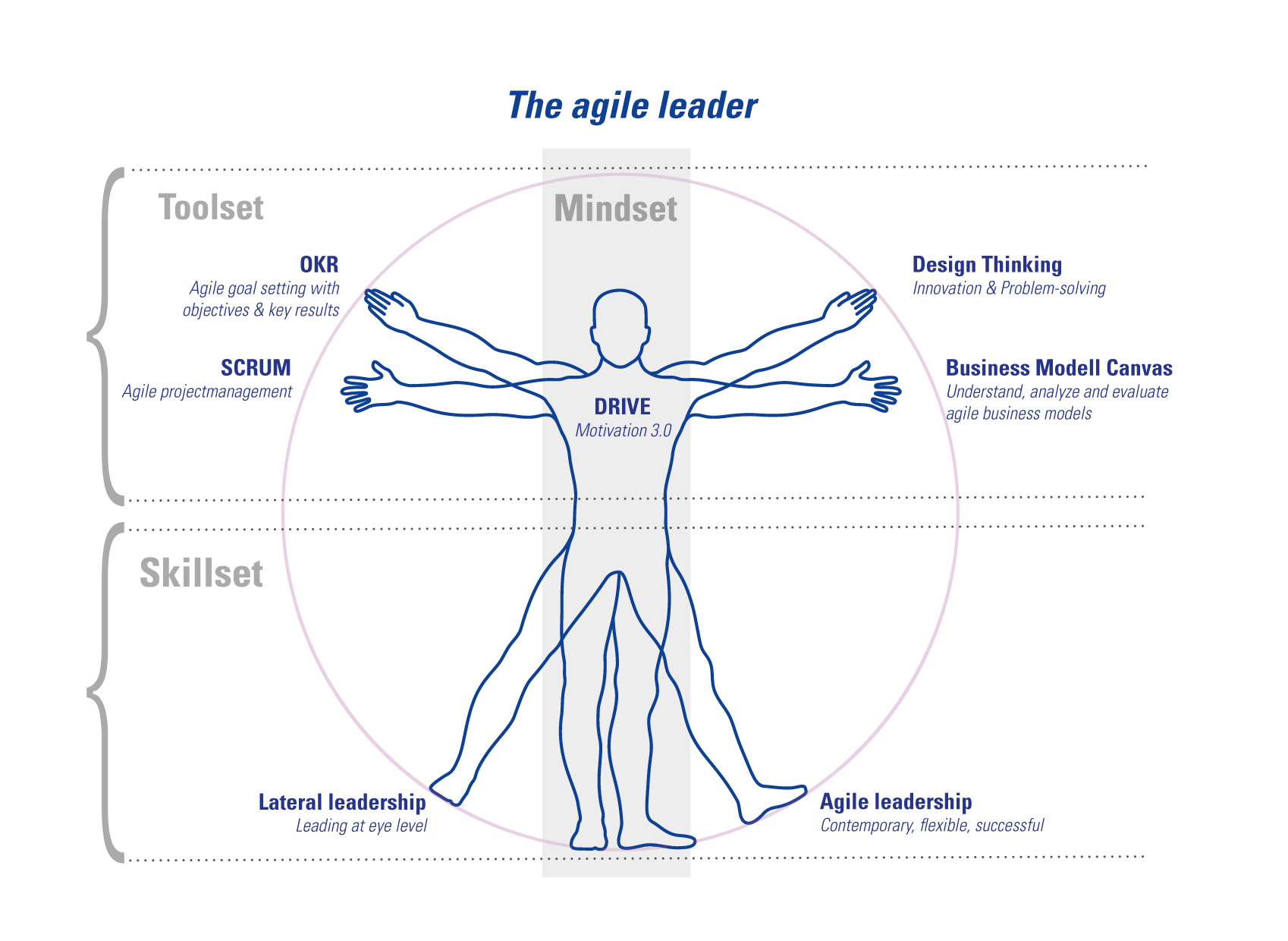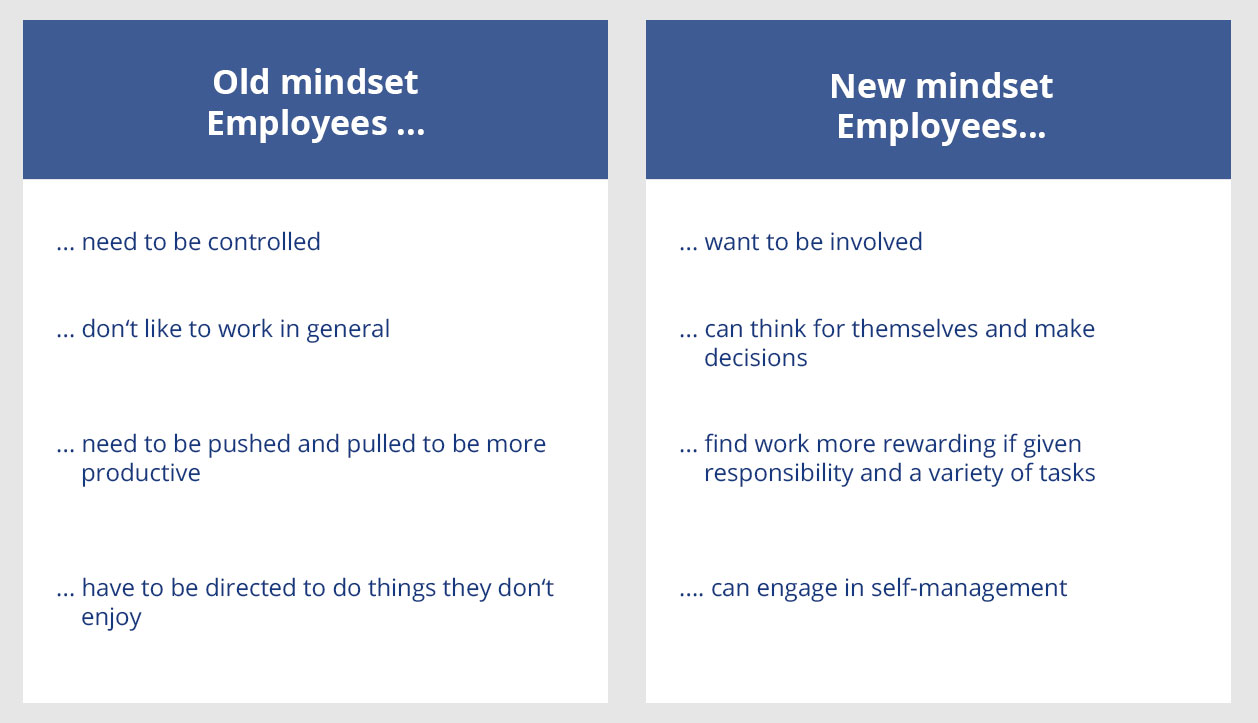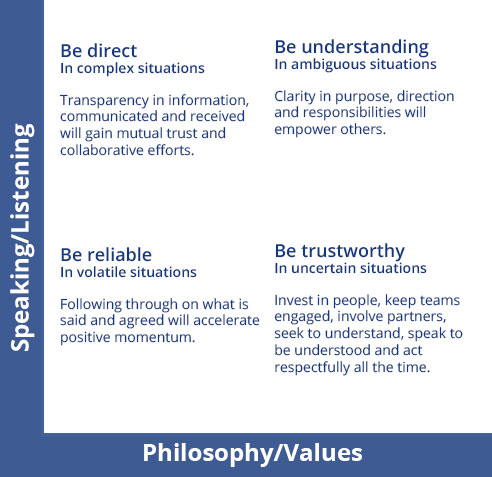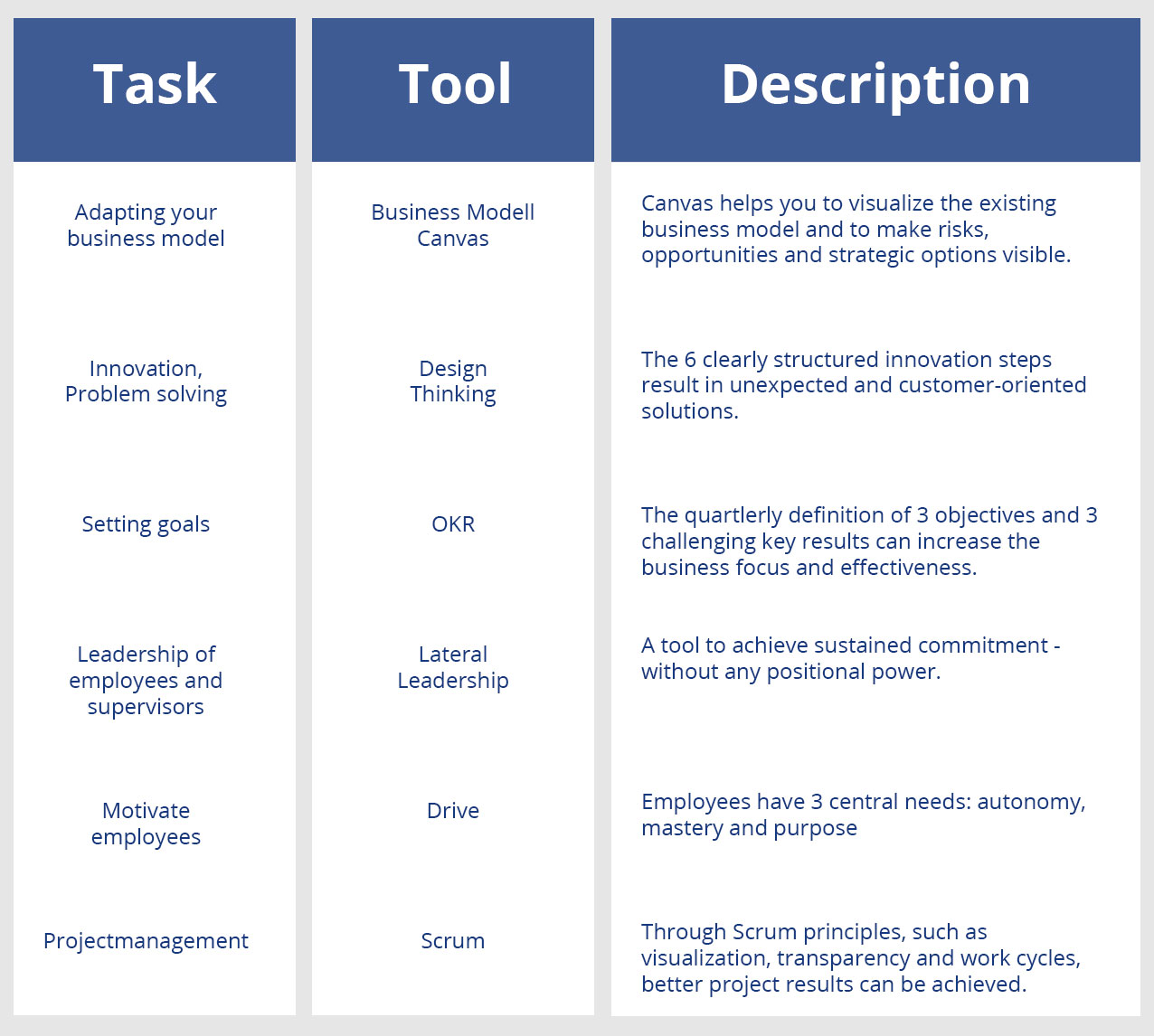Modern technologies have changed our working conditions. Digitalization has become the number one leadership challenge. In order to succeed as a company in times of this digital revolution, a new, agile leadership approach has become a matter of survival.
Whereas the business world used to be rather steady and predictable before the digitalization, it is increasingly volatile, uncertain, complex and ambiguous (VUCA).
Nevertheless, many leaders still employ practices, strategies, and tools that were common in times before digitalization, where leadership was long-term, bureaucratic, hierarchical, directing and instructive.
But – this leadership model is no longer up to date due to the changes in the business world. Specifically, this means that
- the “internet of things” is real
- information is accessible to everyone instead of a small group only
- old businesses close down and new ones open up every day
- former constants now underlie regular change
- expertise shows in a well-developed resource-network rather than mere theoretical knowledge
What are the consequences of the digital revolution for leaders?
Due to the changes in our business world, a lot must change on the leadership level as well. Leadership must be adapted to constant changes and keep track with the latest technologies and trends. But what are now the specific consequences for leaders?
- Traditional development is expensive and time-consuming
- Teams need to be empowered; collaboration is essential
- Development often requires customers to be involved in the process
- Requirements are constantly changing
- No clear conclusion, development continues
In short: a new leadership approach is needed.
We need a leadership approach that is natively adaptive to change – and does not build upon past conditions. An approach that does not assume that the world is stable and predictable – but rather is aware of the fact that the fundamental conditions have to be questioned again and again during a project. After all, the future of business-success belongs to those, who know how to use the changes for themselves and to turn challenges into opportunities.
Agile leadership as a new leadership approach
Agile leadership originates from the IT industry, which is an industry that is constantly changing. This leadership approach is designed for fast changing cycles and is using shorter sprints, iteration cycles, and continuous feedback. Agile leadership is driven by transparent processes and developments and supports team-collaboration, communication, and interaction within the team.
What do you need as an agile leader to be successful in today’s world?

- A new mindset, to see change as an opportunity to create an agile organizational culture, to communicate the „big picture“ and to always be one step ahead of the competition.
Individuals & interactions instead of processes & tools
Working software instead of comprehensive documentation
Customer collaboration instead of contract negotiation
Responding to changes instead of following a plan

2. A new skillset, to create the framework and infrastructure for an individual development of each employee.

Skills, an agile leader needs to have
- Entrepreneurial thinking
- Strong customer focus
- Employee focus
- Teamwork
- Self-leadership and reflection
- Tolerance for ambiguity
- Flexibility
- Change management competencies
- Solution competency
- Leading virtual teams, leading from distance
- Knowing agile work and management methods
- High communication competency
3. A new toolset, to successfully implement the theory into practice and maintain an agile organizational culture.

Design Thinking, OKR, Scrum, Lateral Leadership & Co.
What are the concrete consequences for you as a leader?
Due to the digitization, roles and responsibilities have changed within companies. The market is changing daily and the world is becoming increasingly uncertain. Agile leadership is indispensable in order to be able to assert itself as a company on the market in the long term. However, the successful transition to an agile leadership model requires the full support of everyone involved.
What serves you next?
Blog: What's the big deal about digital transformation?
Personal computers have been used at our workplaces for already 30 years and we all have been using e-mails and the internet for the past 20 years. But why are we only talking about a digital transformation now? And what’s the big deal about it? Is digital transformation just a buzzword?
Video: Agile leadership - Orientation and basics
The digitalization has changed our business world in the last years. To master the challenges of the digital transformation, new leadership approaches are needed. MDI trainer and agile leadership expert Alexandra Sock gives a brief explanation about the need for agile leadership and different agile tools.
Blog: Implementation of OKR [experience report]
We are working with the agile OKR (Objectives and key results) method since the beginning of 2017.Gunther Fürstberger, CEO at MDI, is talking about the implementation of OKR, the procedure of the different meetings and the current results evaluation.




